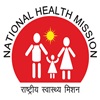NATIONAL LEPROSY ERADICATION PROGRAMME (NLEP)
Background:
National Leprosy Control Programme (NLCP) was launched by the Govt. of India in 1954- 55. Multi Drug Therapy (MDT) came into wide use from 1982, and the National Leprosy Eradication Programme was introduced in 1983. The strategy of NLEP was based on controlling the disease through reduction in the quantum of infection in the population and reduction in infective source, thus breaking the chain of disease transmission. The programme was initially taken up in endemic districts and was extended to all districts in the country from 1993-94 with World Bank Assistant. Four Research & Training Institutes were established directly under DGHS, namely Central Leprosy Training and Research Institute Institutes (CLTRI) Chengalpattu, Regional Leprosy Training and Research Institute (RLTRI) at Raipur, Gauripur and Aska. In addition, a Training Centre was established at Agra under ICMR. Remarkable progress has been achieved in reducing the disease burden in the country. India achieved the goal set by the National Health Policy, 2002 of elimination of leprosy as a public health problem, defined as less than 1 case per 10,000 population, at the National level in December 2005. Although Uttarakhand state has achieved the target of elimination i.e. to bring down the prevalence rate of leprosy to below 1 per Ten Thousand population in March 2005, still about 300 new leprosy cases are being detecting every year.
Vision:
“Leprosy-free India” is the vision of the NLEP.
Mission:
The NLEP’s mission is to provide quality leprosy services free of cost to all sections of the population, with easy accessibility, through the integrated healthcare system, including care for disability after cure of the disease.
Objectives:
- To reduce Prevalence rate less than 1/10,000 population at sub national and district level.
- To reduce Grade II disability % < 1 among new cases at National level
- To reduce Grade II disability cases < 1 case per million population at National level.
- Zero disabilities among new Child cases.
- Zero stigma and discrimination against persons affected by leprosy.
Strategy:
- To achieve the aforementioned objectives, the main strategies to be followed are:
- Integrated anti-leprosy services through General Health Care system.
- Early detection and complete treatment of new leprosy cases.
- Carrying out household contact survey for early detection of cases.
- Involvement of Accredited Social Health Activist (ASHA) in the detection and completion of treatment of Leprosy cases on time.
- Strengthening of Disability Prevention and Medical Rehabilitation (DPMR) services.
- Information, Education and Communication (IEC) activities in the community to improve self-reporting to Primary Health Centre (PHC) and reduction of stigma.
- Intensive monitoring and supervision at Health and Wellness Centers and Block Primary Health Centre/Community Health Centre.

